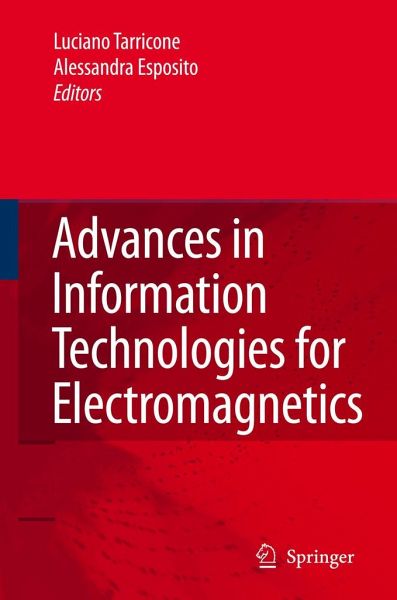Nicht lieferbar

Advances in Information Technologies for Electromagnetics
Versandkostenfrei!
Nicht lieferbar
Advances in Information Technologies for Electromagnetics offers a broad panorama on recently achieved and potentially obtainable advances in electromagnetics with innovative IT technologies.Simple tutorial chapters introduce the reader to cutting edge technologies, such as parallel and distributed computing, object-oriented technologies, grid computing, semantic grids, agent based computing and service-oriented architectures.On such bases, a variety of EM applications is proposed: 1) parallel FDTD codes (both for antenna analysis and for metamaterial applications), 2) grid computing for compu...
Advances in Information Technologies for Electromagnetics offers a broad panorama on recently achieved and potentially obtainable advances in electromagnetics with innovative IT technologies.
Simple tutorial chapters introduce the reader to cutting edge technologies, such as parallel and distributed computing, object-oriented technologies, grid computing, semantic grids, agent based computing and service-oriented architectures.
On such bases, a variety of EM applications is proposed: 1) parallel FDTD codes (both for antenna analysis and for metamaterial applications), 2) grid computing for computational EM (CEM) (with applications to antenna arrays, wireless and remote-sensing systems) 3) mobile agents for parametric CEM modeling 4) complex/hybrid EM software environments (with applications to planar circuits, quasi-optical systems,...) 5) semantic grids for CAE of antennas arrays.
This way the reader, after learning from very schematic tutorials the most relevant features of IT tools, has an immediate feeling of their impact on daily EM research.
Simple tutorial chapters introduce the reader to cutting edge technologies, such as parallel and distributed computing, object-oriented technologies, grid computing, semantic grids, agent based computing and service-oriented architectures.
On such bases, a variety of EM applications is proposed: 1) parallel FDTD codes (both for antenna analysis and for metamaterial applications), 2) grid computing for computational EM (CEM) (with applications to antenna arrays, wireless and remote-sensing systems) 3) mobile agents for parametric CEM modeling 4) complex/hybrid EM software environments (with applications to planar circuits, quasi-optical systems,...) 5) semantic grids for CAE of antennas arrays.
This way the reader, after learning from very schematic tutorials the most relevant features of IT tools, has an immediate feeling of their impact on daily EM research.




